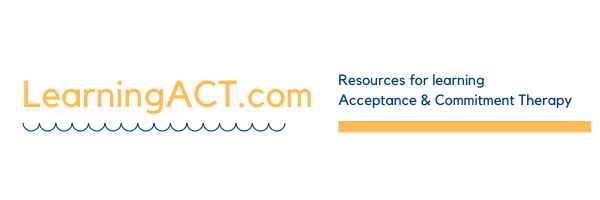
What’s new in the second edition? The revised edition of Learning ACT was thoroughly rewritten. Over the past decade, we have obtained input from hundreds of readers and their suggestions have greatly altered the text to make it more user friendly. It is also more comprehensive and has been been expanded to incorporate all that has been learned in ACT in the decade since the first edition. In a new introductory chapter, the ACT model is now linked more thoroughly to new thinking on evolutionary models and links to the underlying model of language and cognition are expanded. The self as context/flexible perspective taking chapter is almost completely rewritten in light of advances in that area. A completely new chapter was added that discusses how culture, diversity, and context can be taken into account when adapting ACT to your clients and your work context. The case conceptualization process was thoroughly rewritten. Finally, the core competencies were revised, along with the extensive transcripts to make them more user-friendly and accessible to readers. Many new experiential exercises were written so that the reader can learn ACT from the inside-out. In sum, it was a lot of work, be we hope it was worth it to you, the reader.
Using the book: As many of you experienced with ACT know, ACT is something you “do”, not something you talk about. In ACT, it is not only verbal knowledge that will guide you through the therapy; knowing by experience (i.e., experiential knowledge) is also key to understanding and to providing quality therapy. There is a strong tradition of experiential learning within the ACT model, both in our work with clients and in training. The Learning ACT workbook is based on this model. As such, it is designed to be a highly interactive educational tool. Clinicians will learn not only through the material presented but also through their own work with the numerous exercises, role plays, vignettes, and also the videos that accompany the book. Learning ACT is like attempting to learn the violin. You can read a book about how to hold the bow or how the musical scales function. However, simply reading about playing does not make you a violinist. Practice is essential. Although reading (verbal knowledge) can teach you “how to hold the bow,” the exercises in this book are designed to help you begin to play the violin (experiential knowledge).
What is included in the book: The introduction and first chapter of this workbook provide an overview of the theory behind ACT and some tools to help you think about cases from an ACT perspective. Specifically, chapter 1 outlines the ways in which basic learning processes, combined with the problematic effects of language, lead to increased suffering for humans. The ACT theory of change is also outlined in chapter 1. Chapters then focus on the core competency areas to be learned by the ACT clinician. Six of these chapters focus on the six flexibility processes, and the last one focuses on the therapeutic relationship in ACT. Each chapter includes a description of basic metaphors, stories, and techniques used in connection with that competency, as well as client/clinician demonstrations of each technique, and ends with a practical writing assignment in which you are asked to apply the principles you have learned to various sample client materials. Each chapter also addresses when to use the process discussed, how to address common problems that arise when implementing that process, and at least one experiential exercise. A newly added chapter discusses how to take culture, diversity, and setting into account in adapting ACT to your work. A chapter helps you to integrate all you have learned in the previous chapters by guiding you through case conceptualization and treatment planning from an ACT perspective and giving you an opportunity to apply an ACT model to practice cases. Finally, you are asked to engage exercises and material intended to help you integrate all you have learned to this point.
The Videos: The videos that come with the book complement the book by providing role-played examples of the core competencies, with trained actors playing the clients. The videos provide models of exercises and techniques in a manner that could not be adequately demonstrated in written form. One good way to use it is to play each clip and then pause the playback before the narrator describes what was being done. Try to determine what fit or did not fit with the ACT model in the clip, and only then let the narrator describe her or his thinking. This start-and-stop method is especially recommended for workshops or classroom use of the book and video. We recommend reading the corresponding chapter in the book before watching a section of the video. For more information and problem-solving help for using the video, see the FAQ.
